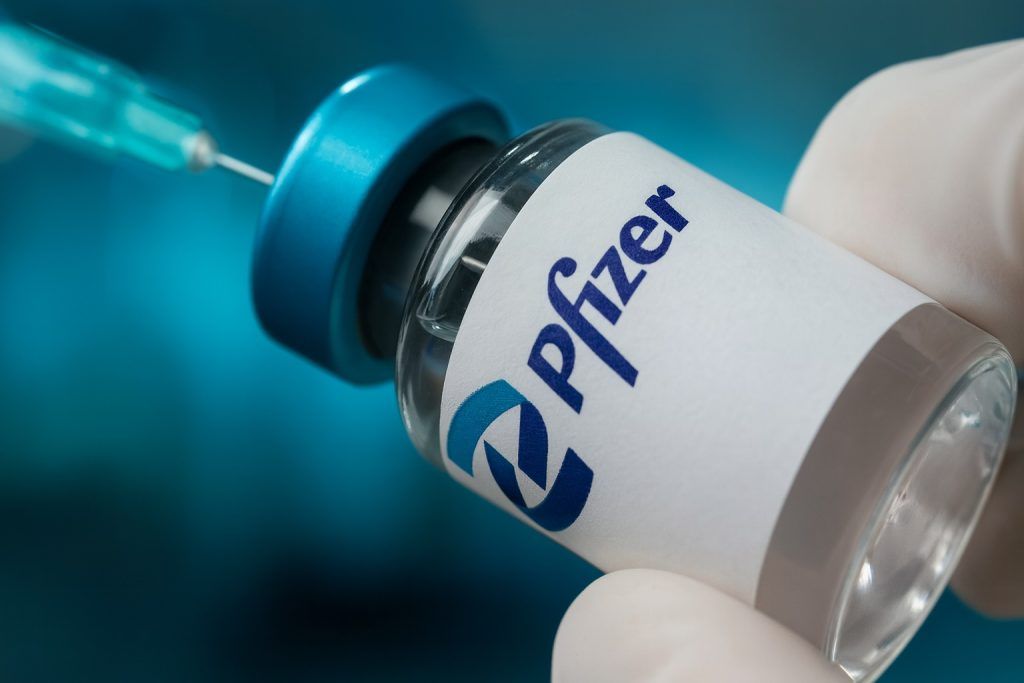Robinhood Markets (NASDAQ: HOOD) heads into Friday’s session under heavy pressure after a sharp sell-off tied to its new cash‑delivery feature and fresh regulatory headlines, even as its latest operating metrics and earnings show explosive growth.
As of early pre‑market trading on November 14, HOOD is indicated lower again after an 8.6% plunge on Thursday, setting up a volatile open for one of 2025’s most-watched fintech names. [1]
1. Robinhood stock today: Price action and pre‑market snapshot
Thursday’s sell‑off
- On Thursday, November 13, Robinhood shares sank 8.61% to close at $121.53, after trading between $130.15and $119.47 on heavy volume of about 36.4 million shares. [2]
- That drop followed a roller‑coaster week that saw HOOD trade above $140 earlier, and it comes after a huge run: the stock is still up well over 200% year‑to‑date despite the pullback. [3]
Pre‑market indication before the opening bell
- MarketBeat’s extended‑hours data shows Robinhood at about $114.74 in pre‑market trading around 7:51 a.m. ETon Friday, down roughly 5.6% from Thursday’s close of $121.53. [4]
- Taken together, that’s a potential two‑day slide of roughly 13–14% from Wednesday’s close near $133 if those indications hold into the open. [5]
Macro backdrop
- The broader market tone is risk‑off: Dow, S&P 500 and Nasdaq futures are all trading lower this morning after a tech‑led rout that knocked the Dow down about 800 points yesterday. [6]
- Crypto is also under pressure – Bitcoin has dropped below $96,000, its lowest level since May – and crypto‑linked names like Robinhood, Coinbase and Marathon are “pointed sharply lower” in pre‑market trading. [7]
Put simply: HOOD is set up for another volatile session, dragged by both stock‑specific headlines and a broader tech/crypto shake‑out.
2. The big story: Robinhood’s new cash‑delivery service spooks investors
The main narrative around Robinhood today is its new cash‑delivery feature, launched in partnership with instant‑commerce app Gopuff.
How the service works
According to reporting from MarketWatch, the Wall Street Journal and Benzinga: [8]
- Robinhood will let certain users order physical cash to their door from their Robinhood account balances via Gopuff.
- The cash arrives in a sealed paper bag within roughly 30 minutes in early trials.
- Fees:
- $6.99 per delivery for most eligible users.
- $2.99 for customers with over $100,000 in assets on Robinhood.
- Eligibility (pilot phase):
- Initially limited to Robinhood Gold members.
- Requires at least $1,000 in monthly direct deposits.
- Launching first in New York City, with plans to expand to major metros such as San Francisco, Philadelphia, and Washington, D.C. in 2026.
- Security measures:
- Couriers don’t know they’re carrying cash.
- Deliveries require a verification code at handoff.
- Drivers undergo background checks.
The company is pitching this as a modern alternative to ATMs, arguing that paying a few dollars for on‑demand cash is comparable to using an out‑of‑network ATM, whose average fee is approaching $5 in the U.S. [9]
Market reaction: “Cool product” meets valuation reality
Despite the clever concept, the market’s verdict so far has been harsh:
- Articles tracking Thursday’s move note that Robinhood shares fell about 9% following coverage of the cash‑delivery rollout and related commentary. [10]
- Commentators highlight a perceived disconnect: the company is producing record operating metrics, yet the stock was “tumbled nearly 10%” as investors fixated on this somewhat quirky, fee‑based product. [11]
Key concerns investors may be weighing:
- Optics and focus – Some see cash delivery as a flashy add‑on rather than a core driver of long‑term value.
- Regulatory and security questions – Any mishap in delivering literal bags of money could draw unwanted scrutiny.
- Valuation sensitivity – With the stock up several hundred percent over the past year, expectations are sky‑high, so even unusual product announcements can trigger profit‑taking.
In short, the cash‑delivery feature is headline‑friendly but polarizing, and it’s clearly acting as a near‑term catalyst for selling.
3. Under the surface, Robinhood’s October and Q3 numbers are very strong
Thursday’s sell‑off comes just as Robinhood reported exceptionally strong operating and financial results, which remain a critical piece of the story for anyone watching HOOD into today’s open.
October 2025 operating data: growth across the board
In a November 13 press release, Robinhood reported October 2025 metrics that show broad‑based growth: [12]
- Funded customers:
- 27.1 million, up about 210,000 month‑over‑month and +2.6 million year‑over‑year.
- Total platform assets:
- $342.6–$343 billion, up 3% vs. September and 115% vs. October 2024.
- Net deposits:
- $5.6 billion in October alone.
- $68.7 billion over the last 12 months, implying about 43% annualized growth vs. October 2024 total platform assets.
- Trading volumes (year‑over‑year):
- Equities: $320.1 billion (+153%).
- Options: 266.7 million contracts (+69%).
- Crypto: $32.5 billion (+480%).
- Margin and securities lending:
- Margin balances: $16.5 billion (+166% YoY).
- Securities lending revenue: $60 million (+216% YoY).
That’s a picture of a platform that is rapidly scaling users, assets and trading activity, with meaningful leverage from margin and securities lending.
Q3 2025 earnings: big beat, triple‑digit growth
These monthly metrics build on Robinhood’s Q3 2025 earnings, reported on November 5: [13]
- Revenue: $1.27 billion, up ~100% year‑over‑year and ahead of ~$1.15 billion consensus.
- Earnings per share: $0.61 vs. $0.41 expected – a $0.20 beat.
- On a trailing basis, Robinhood has generated about $2.41 in EPS over the last four quarters, and Wall Street expects earnings to grow another 20% next year, from $1.35 to $1.62 per share. [14]
So while headlines today focus on a “gimmicky” cash feature, the fundamental story remains one of hyper‑growth in users, assets, trading and profitability.
4. Regulatory overhang: Massachusetts gambling case and prediction markets
Alongside product news, regulation is another key risk factor influencing sentiment around HOOD this morning.
What happened in Massachusetts?
- On Thursday, a Massachusetts federal judge refused Robinhood’s request to preemptively block the state from enforcing its gambling laws against the company’s event‑based contracts. [15]
- The case centers on sports‑linked “event contracts” — essentially prediction markets — which Massachusetts officials view as unlicensed sports betting, while Robinhood and its partner Kalshi argue they are regulated derivatives under federal law. [16]
For now, the decision does not shut down Robinhood’s product nationwide, but it:
- Leaves the door open for state‑level enforcement actions in Massachusetts.
- Signals that courts are not eager to grant broad preemptive protection to prediction‑market providers.
- Adds uncertainty to what management has described as one of Robinhood’s fastest‑growing businesses. [17]
Investors heading into today’s open will be weighing how much regulatory risk they are willing to tolerate in exchange for the upside of a new high‑margin product line.
5. New 2x HOOD ETFs: HOOX and HOOZ dial up the leverage
Another fresh development this week: the launch of single‑stock ETFs tied directly to HOOD.
- Defiance ETFs has launched:
- Both funds launched around November 12–13, 2025, reflecting significant demand from traders to either magnify bullish exposure or bet aggressively against Robinhood on a short‑term basis.
These products don’t change the fundamentals, but they likely:
- Increase intraday volatility in HOOD as ETF rebalancing and leveraged flows interact with the underlying stock.
- Make it easier for both bulls and bears to build leveraged positions without margin accounts, potentially amplifying moves around news like today’s.
For traders watching HOOD at the open, the presence of HOOX and HOOZ is a reminder that flows, not just fundamentals, may drive price action.
6. Flows and ownership: who’s buying and who’s trimming HOOD?
Institutional investors
Two fresh 13F‑driven headlines from today, November 14, highlight how large investors are repositioning around Robinhood: [20]
- Police & Firemen’s Retirement System of New Jersey:
- Cut its HOOD stake by 54% in Q2, selling 131,737 shares.
- Now holds 112,424 shares, worth about $10.5 million at the time of the filing.
- Mitsubishi UFJ Trust & Banking Corp:
- Increased its position by 14.2%, adding 38,755 shares.
- Now owns 311,298 shares valued at roughly $29.1 million.
MarketBeat notes that about 93% of Robinhood’s shares are held by institutions and hedge funds, underscoring that big money is heavily involved in the name. [21]
Insider activity
The same filings highlight significant insider selling over the last several months: [22]
- Director Meyer Malka sold over 1.09 million shares, worth roughly $113.6 million, in late August.
- Other insiders, including senior executives, have sold in aggregate about 4.3 million shares, totaling more than $500 million over the past 90 days.
- Even after these sales, insiders still own around 14–15% of the company.
Heavy insider selling doesn’t automatically mean a top is in — executives diversify for many reasons — but it is a data point traders will have in mind as they weigh risk/reward at these valuation levels.
7. Wall Street’s view: high targets, high dispersion
Despite the recent slide, analysts remain broadly positive on Robinhood, though there’s wide disagreement on how much upside remains.
Fresh rating and target moves
Recent actions include: [23]
- Citizens: Reiterated “Market Outperform” with a $180 price target.
- Goldman Sachs: Trimmed its HOOD target to $177 from $181 but maintained a Buy rating.
- DBS Bank: Raised its target to $165 from $125, rated Buy.
- Autonomous Research: Nudged its target to $173 from $170, rated Outperform.
- President Capital: Upgraded Robinhood to Buy from Neutral, boosting its target to $179.
Consensus numbers
Across aggregators: [24]
- MarketBeat data shows:
- A “Moderate Buy” consensus.
- Around 23 analysts following HOOD.
- An average target near $132–133, not far from Thursday’s post‑selloff levels.
- TipRanks and other platforms skew higher, with average targets around the $150 area, and high‑end targets near $180 and low‑end targets in the $60–70 range.
On valuation, Robinhood currently trades at:
- A trailing P/E around 50, with a PEG (price/earnings‑to‑growth) ratio near 3.0. [25]
- A 52‑week range of roughly $29.66 to $153.86, and a market cap around $100–125 billion depending on where it opens today. [26]
The takeaway: Wall Street is generally bullish but far from unanimous, and at these multiples, the market is pricing in continued rapid growth plus successful navigation of regulatory and product risks.
8. What to watch at today’s open if you follow HOOD
Heading into the U.S. market open on Friday, November 14, 2025, traders watching Robinhood will likely focus on a few key questions:
- Does the pre‑market slide stick?
- Pre‑market quotes near $115 imply another 5–6% drop on top of Thursday’s 8.6% decline. Watch whether HOOD:
- Holds above the low $110s, or
- Extends the sell‑off toward its longer‑term moving averages around $100–102. [27]
- Pre‑market quotes near $115 imply another 5–6% drop on top of Thursday’s 8.6% decline. Watch whether HOOD:
- Volume and volatility
- Thursday’s >36 million shares traded was well above average. If that kind of volume persists — especially with the new 2x long (HOOX) and 2x short (HOOZ) ETFs now live — intraday swings could be large. [28]
- Sentiment around the cash‑delivery feature
- Watch for more commentary from analysts or management:
- Does the market start to see this as a clever premium feature akin to private‑banking services, or
- Does the narrative remain that Robinhood is chasing gimmicks at a time when scrutiny on risk is high? [29]
- Watch for more commentary from analysts or management:
- Regulation headlines
- Any follow‑up from Massachusetts regulators, or commentary from other states on prediction markets, could move the stock given how central new products are to Robinhood’s growth story. [30]
- Crypto and tech risk sentiment
- With tech futures down and Bitcoin at multi‑month lows, Robinhood’s fate today is also tied to broader risk appetite. A further leg down in mega‑cap tech or crypto could weigh on HOOD even if company‑specific news doesn’t change. [31]
Final word
Robinhood enters today’s U.S. session with conflicting signals:
- Very strong fundamentals (surging customers, assets, trading volumes and earnings). [32]
- Bold but controversial products, from prediction markets to cash‑delivery, that invite both regulatory and reputational risk. [33]
- Crowded ownership and high expectations, reflected in institutional stakes, insider selling and lofty price targets. [34]
For anyone tracking HOOD today, the key is how the market rebalances those three forces — growth, innovation risk, and valuation — once the opening bell rings.
Disclaimer: This article is for informational and educational purposes only and does not constitute investment advice, a recommendation, or a solicitation to buy or sell any security. All prices and data are as of the morning of November 14, 2025 and may change rapidly.
References
1. stockanalysis.com, 2. stockanalysis.com, 3. www.smartkarma.com, 4. www.marketbeat.com, 5. stockanalysis.com, 6. www.investopedia.com, 7. www.investopedia.com, 8. www.marketwatch.com, 9. www.marketwatch.com, 10. www.moomoo.com, 11. www.ad-hoc-news.de, 12. www.globenewswire.com, 13. www.marketbeat.com, 14. www.marketbeat.com, 15. www.law360.com, 16. www.reuters.com, 17. stockanalysis.com, 18. www.globenewswire.com, 19. www.marketwatch.com, 20. www.marketbeat.com, 21. www.marketbeat.com, 22. www.marketbeat.com, 23. www.investing.com, 24. www.marketbeat.com, 25. www.marketbeat.com, 26. www.marketbeat.com, 27. www.marketbeat.com, 28. stockanalysis.com, 29. www.marketwatch.com, 30. www.marketscreener.com, 31. www.investopedia.com, 32. www.globenewswire.com, 33. www.marketwatch.com, 34. www.marketbeat.com







